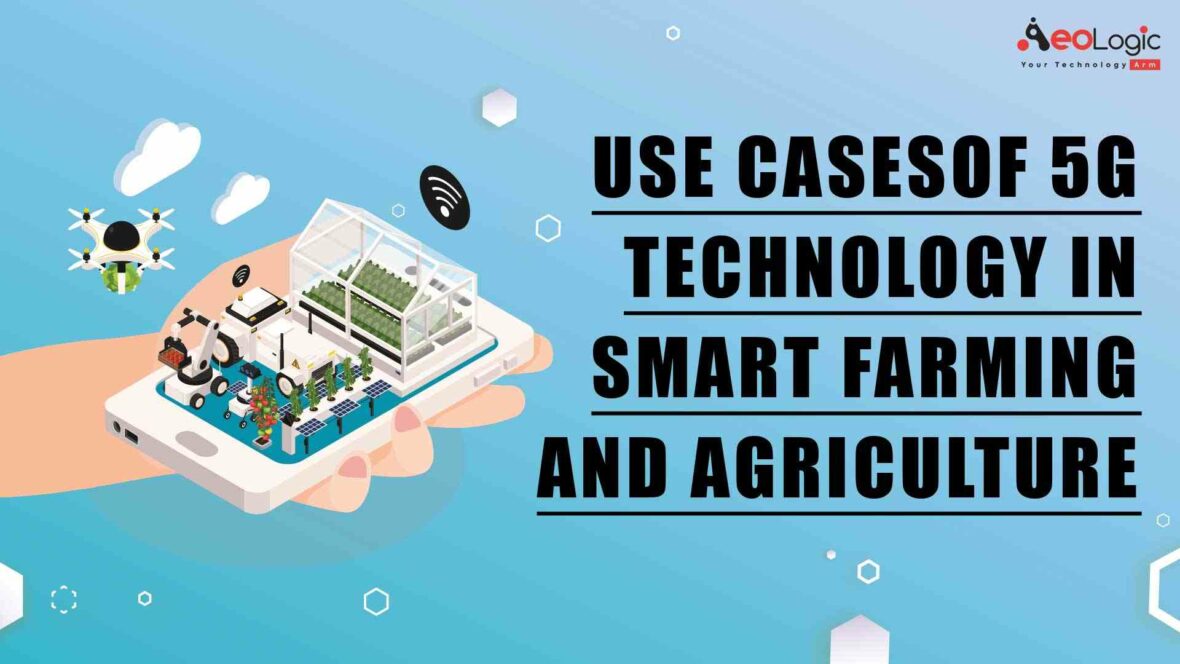The world is on the cusp of a new technological revolution – 5g technology. This next generation of cellular networks promises faster speeds, lower latency, and more reliability than ever before. And while we often think of 5g in terms of its potential for consumer applications, like streaming movies or playing online games, the truth is that this technology also has the potential to revolutionize other industries – including farming and agriculture. In this blog post, we will explore some of the potential use cases of 5g technology in smart farming and agriculture. From precision irrigation to real-time crop monitoring, 5g could change the way we grow food – and make our farms more efficient and sustainable in the process.
The Future of 5G and Smart Farming: The Next 5 Years
The next five years will see a continued rollout of 5G technology and the rise of smart farming. 5G will enable farmers to connect to the internet of things, giving them real-time data on their crops and animals. This data can be used to optimize growth, yield, and quality while minimizing inputs.
In addition, 5G will allow for the development of autonomous vehicles and drones for farming. These technologies can help with tasks such as crop mapping and planting, as well as crop monitoring and inspection. Farmers will be able to operate their farms with fewer workers, which will lead to lower labor costs.
The combination of 5G and smart farming will result in more efficient and sustainable agriculture. This will benefit both farmers and consumers by providing food that is grown using fewer resources.
Also Read: Benefits of 5g in Industrial Environments
Use cases of 5G in Smart Farming and Agriculture
The ever-growing demand for food and other agricultural products has placed immense pressure on farmers to increase their yields. At the same time, consumers are increasingly demanding higher standards of food safety and quality. To meet these demands, farmers are turning to smart farming technologies that can help them boost their productivity while ensuring that their products meet stringent quality standards.
Smart Farming Technologies
One key area where smart farming technologies are being deployed is in the management of water resources. With climate change leading to more erratic weather patterns, farmers need to be able to better predict when droughts or floods will occur so that they can take steps to protect their crops. Smart irrigation systems that make use of data from weather forecasts can help farmers optimize their water usage and reduce wastage.
Crop Monitoring
Another area where smart farming technologies are being used is in the area of crop monitoring. By using sensors and other devices, farmers can collect data on factors such as soil moisture levels, temperature, and sunlight exposure. This data can then be used to fine-tune growing conditions so that crops receive exactly what they need to thrive. Farmers can also use this data to detect early signs of pests or diseases so that they can take corrective action before it leads to significant yield loss.
GPS
By using GPS-guided equipment, farmers can apply inputs such as fertilizers and pesticides only where they are needed, rather than blanket-spraying entire fields. This helps reduce wastage and ensures that crops receive the right amount of these inputs, leading to higher yields and lower production costs.
High-speed Wireless Connectivity
This is where 5G comes in. 5G networks offer the high bandwidth and low latency needed to support the real-time data collection and analysis required for smart farming applications. In addition, 5G can provide coverage in rural areas where other wireless technologies cannot reach. This is critically important for farmers, as they often operate in remote locations with limited or no access to wired broadband connectivity.
With its ability to support the high-speed data transfer rates and low latencies needed for smart farming applications. 5G has the potential to revolutionize agriculture. Farmers who adopt 5G-enabled smart farming technologies will be able to increase their yields, reduce their production costs, and improve the quality of their products. In doing so, they will be able to meet the ever-growing demand for food and other agricultural products while ensuring that consumers can enjoy safe, high-quality food products.
Also Read: Role of Private 5G Networks in Industry 4.0
Benefits of using 5G in agriculture
In recent years, the world has seen a growing interest in the use of 5G technology in smart farming and agriculture. There are many benefits of using 5G in agriculture, including increased efficiency, higher quality data collection, and improved connectivity.
5G technology can help farmers to increase their efficiency by allowing them to connect to more devices and collect more data. In addition, 5G can also enable farmers to connect to new services and applications that can help them to improve their operations. For example, there are now applications that can help farmers to track their crops, monitor their soil moisture levels, and even control pests.
5G technology can also help farmers to collect higher-quality data. This is because 5G offers higher speeds and lower latencies than previous generations of mobile networks. This means that farmers can collect data more quickly and accurately, which can lead to better decision-making on the farm.
Finally, 5G technology can also improve connectivity on the farm. This is important because it can allow farmers to connect to new markets and customers. In addition, 5G can also provide a more reliable connection to critical services such as weather information and mapping tools.
Challenges associated with the use of 5G in agriculture
The use of 5G in agriculture presents a number of challenges, including:
- Limited coverage: 5G networks are still in their infancy and are not yet widely available. This means that farmers may not have access to the high speeds and low latency that 5G can offer.
- Interference: 5G signals can be interfered with by weather conditions and other objects, which can impact signal quality and reliability.
- Cost: The cost of 5G equipment and services is still relatively high, which may limit its uptake by farmers.
- Complexity: The deployment of a 5G network is more complex than previous generations of mobile networks, which may present difficulties for farmers who are not familiar with the technology.
- Security: The use of 5G networks raises concerns about data security and privacy, as well as the potential for cyberattacks.
Also Read: How Will 5G Transform Industrial IoT?
Conclusion
The use cases of 5G technology in smart farming and agriculture are many and varied. From increasing crop yields to improving animal husbandry, 5G is set to revolutionize the way we farm. With its high speed and low latency, 5G will enable farmers to connect to the Internet of Things. It gives them real-time data on their crops and animals. This will allow farmers to make more informed decisions about how to care for their crops and animals.
If you have any concerns about 5G technology, you can contact Aeologic Technologies!
Related Blogs:
- How AI/ML Can Change the Public Transportation Industry
- Transforming Business With Digital Technology in the Oil Palm Industry in India
- Importance of Digital Asset Management in the Retail Industry
- How AI is Transforming the Agriculture Industry
- 10 Ways to Use Artificial Intelligence to Improve Business Processes
- The Future of IoT Technology in Convenience Stores
- Building Manufacturing Resilience Through AI and ML







